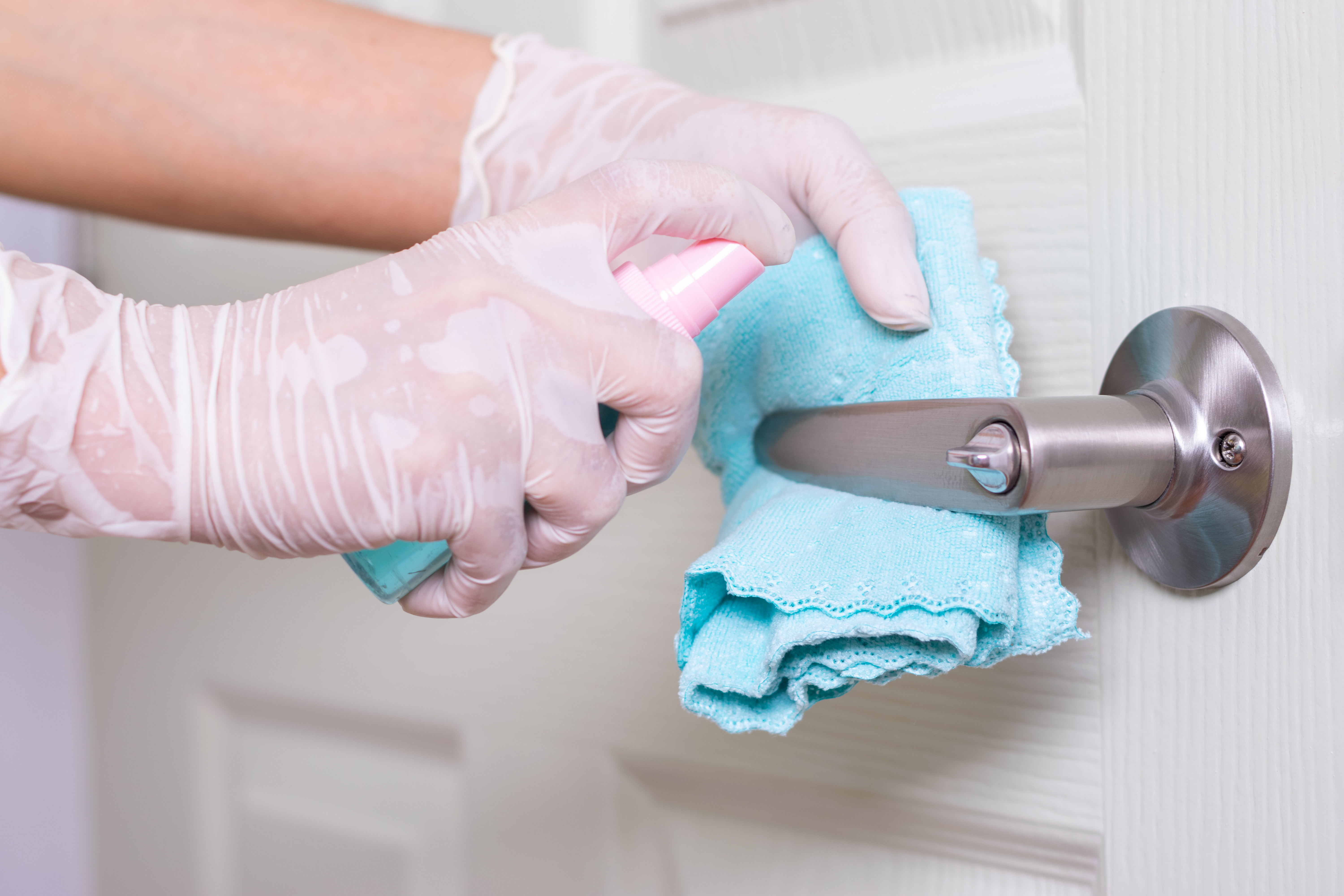The coronavirus 'does not spread easily' from touching surfaces or objects, CDC says
Still, spread through contaminated surfaces remains "possible," agency says

Editor's Note: The Centers for Disease Control and Prevention (CDC) released a statement on Friday (May 22) saying this updated wording was done in an attempt to clarify spread beyond person-to-person. "This change was intended to make it easier to read, and was not a result of any new science," the agency wrote in the statement. "After media reports appeared that suggested a change in CDC’s view on transmissibility, it became clear that these edits were confusing. Therefore, we have once again edited the page to provide clarity." The subhead now reads: "The virus may be spread in other ways."
Though the primary way the virus spreads is through close contact from person-to-person, it's possible to be infected from touching a surface or object that has the coronavirus on it and then touching the mouth, nose or possibly eyes, they wrote in the statement. "But this isn’t thought to be the main way the virus spreads."
The new coronavirus "does not spread easily" from touching surfaces or objects, according to updated wording on the Centers for Disease Control and Prevention's (CDC) website.
This change was made on May 11 without an announcement from the organization, according to NBC News. The change, which was made during an internal review of their website, was meant to "clarify other types of spread beyond person to person," CDC spokesperson Kristen Nordlund told NBC News.
But there doesn't appear to be any new data on how infectious viral particles are on surfaces, according to NBC News.
Related: 13 coronavirus myths busted by science
Previous research published on March 17 in The New England Journal of Medicine had found that the coronavirus could be viable in the air for up to 3 hours, on copper for up to 4 hours, on cardboard up to 24 hours and on plastic and stainless steel up to 72 hours. But it's still unclear how long SARS-CoV-2 can linger on surfaces and how infectious those surfaces could be, Live Science previously reported.
Get the world’s most fascinating discoveries delivered straight to your inbox.
The coronavirus spreads "very easily and sustainably between people," and that is the main route of transmission, the CDC says on their website. However, "the virus does not spread easily in other ways," their new sub-headline reads (The old sub-headline read "Spread from contact with contaminated surfaces or objects").
Though it's "possible" that COVID-19 spreads in other ways besides person-to-person contact, including from touching surfaces or objects and then touching the mouth, nose or eyes or between animals and people, these are not thought to the main routes of transmission, the agency wrote.
Still, as all the states across the U.S. have at least partially reopened, people are wary of what sort of precautions they should be taking. For example, people are afraid to handle cash, and many businesses have now turned to "touchless" payments, according to The Los Angeles Times.
"A persistent problem in this pandemic has been lack of clear messaging from governmental leadership, and this is another unfortunate example of that trend," Angela Rasmussen, a virologist at the Columbia University Mailman School of Public Health told The Washington Post. "It could even have a detrimental effect on hand hygiene and encourage complacency about physical distancing or other measures."
The CDC has published a set of guidelines on how to clean and disinfect surfaces. "Current evidence suggests that SARS-CoV-2 may remain viable for hours to days on surfaces made from a variety of materials," the agency still says in their guidelines. "Cleaning of visibly dirty surfaces followed by disinfection is a best practice measure for prevention of COVID-19 and other viral respiratory illnesses in households and community settings."
The best way to protect yourself from COVID-19 is to maintain good social distance (about 6 feet), wash your hands often with soap and water and routinely clean and disinfect frequently touched surfaces, according to the CDC.
- The 12 deadliest viruses on Earth
- 20 of the worst epidemics and pandemics in history
- 11 (sometimes) deadly diseases that hopped across species
Originally published on Live Science.
OFFER: Save 45% on 'How It Works' 'All About Space' and 'All About History'!
For a limited time, you can take out a digital subscription to any of our best-selling science magazines for just $2.38 per month, or 45% off the standard price for the first three months.

Yasemin is a staff writer at Live Science, covering health, neuroscience and biology. Her work has appeared in Scientific American, Science and the San Jose Mercury News. She has a bachelor's degree in biomedical engineering from the University of Connecticut and a graduate certificate in science communication from the University of California, Santa Cruz.



